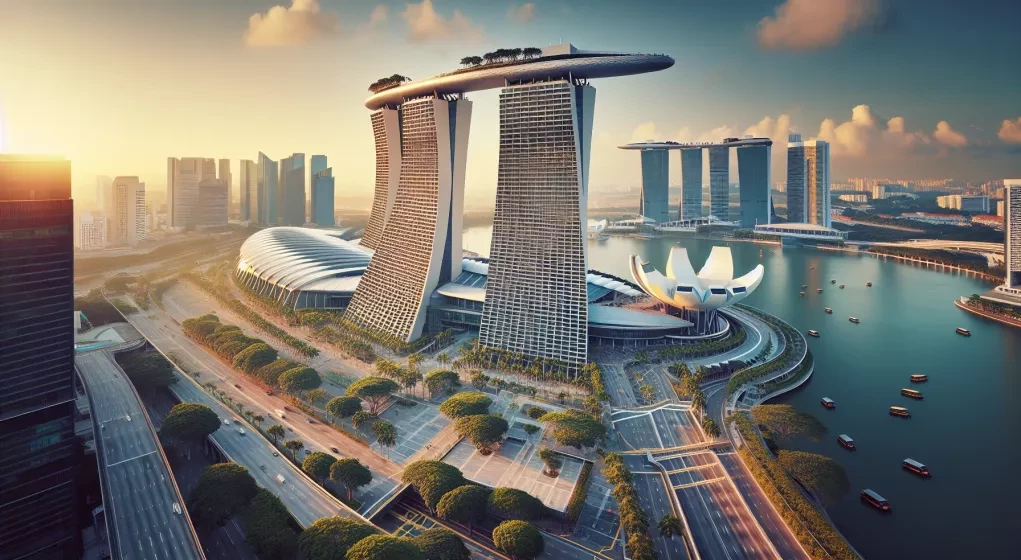As twilight descends upon the glittering skyline of Singapore, the iconic edifice of the Marina Bay Sands casino resort emerges, heralding a beacon of prosperity for the city’s entertainment landscape. Within this realm of opulence, expectations have been transcended, with gaming revenues ascending alongside the glistening towers.
With the curtains closing on the current year, a remarkable scene has unfolded: a surge of 15% in gross gaming revenue (GGR), painting a radiant future for Singapore’s dual jewels, the Marina Bay Sands and Resorts World Sentosa. This economic narrative, sketched by the astute minds at Fitch Ratings, anticipates a further crescendo – a 10% leap in GGR come 2024.
The resurgence of these bustling resorts unfolds as a testament to their strategic prowess. The confines of these establishments are no longer the exclusive haunt of Chinese patrons; instead, an international tapestry weaves through their grand halls. Despite the ebb and flow of mainland Chinese visitors – still caught in the undertow of pre-pandemic numbers – the allure of these gaming havens has only intensified.
The secret lies in the artistry of their appeal, a repertoire extending far beyond the bated breath of the roulette wheel or the siren call of the slot machines. In Singapore, gaming assumes the role of a duet, rather than a solo performance. The commitment by Marina Bay Sands and Resorts World Sentosa to embellish the city’s allure with non-gaming spectacles ensures their monopoly not through chance, but through a deliberate dance of diversification.
Amidst this resurgence, both resorts are casting wider nets to capture the burgeoning tide of post-pandemic wanderlust. The blueprint for Marina Bay Sands reveals an audacious expansion: 1,200 guest rooms rising to meet the skies, a sprawling convention center, and an amphitheater that promises to seat 15,000 enthralled spectators. This expansion is none too grand, for in the fiercely competitive landscape of Asian tourism, such magnificence is not merely for show; it is an imperative for survival.
Fitch’s scrutiny unveils more than a regional phenomenon; it unravels the threads of growth extending across Asia’s tapestry. Macau, the storied enclave of gaming, and Malaysia, where the Genting colossus looms large, are poised on the precipice of prosperity, with GGR prospects parading in lockstep, if not outpacing, those of Singapore.
Yet, 2024 promises to be a mosaic of fortunes. While Asia’s gaming giants reap the bounties of resurgence, North America’s regional casino markets brace against the ebbing tides that could soften their soil. Las Vegas, the grand dame of gaming, finds itself at a curious crossroad; the effervescence of its GGR may dip as visitors disperse their gold across a broader realm of Sin City’s temptations.
Amidst this kaleidoscope of economic auguries, one thing remains immutable: the world watches, with bated breath, as gaming’s global tableau unfolds, each player seeking to carve their legend in the annals of entertainment abundance.






